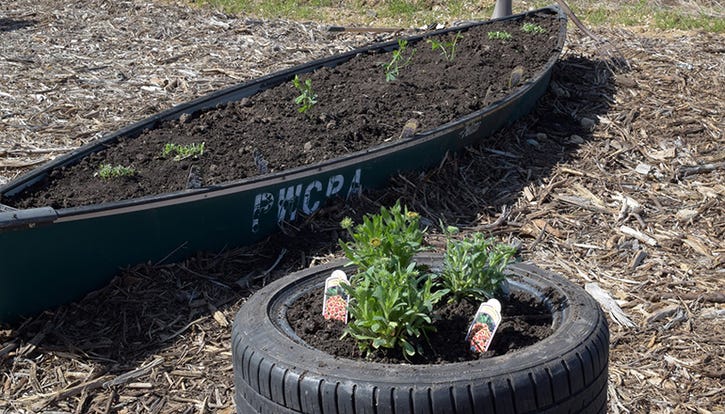Virginia Landfill Becomes Nature and Education Resource
Once complete, the project will be an Eco Park with renewable energy operations and will include a discovery trail and honeybee hives.

Prince William County, Va., is in the midst of a major undertaking: developing its landfill into a resource where the community can learn not only what happens to their trash once it leaves their curb but explore nature through a unique lens.
Once it’s complete, the project, coordinated by the county’s solid waste division, will be an Eco Park with renewable energy operations and a nature and education component to include a discovery trail, European honeybee hives, native bee hotels, a pollinator garden and a meadow, where the bees and garden are located.
Bringing the scheme to fruition has been a community venture, with involvement from two universities, local plant and bee experts, local government agencies, among individuals and entities.
The goal is to see that once the landfill is filled and capped, it continues to be a community resource, says Tom Smith, solid waste division chief for Prince William County Public Works.
A gas-to-energy plant is up and running, with plans to develop solar and wind. An education center is yet to come, but many of the nature components are in place.
The discovery trail, which was built to provide a learning space for Prince William County students, is already in use by three nearby schools. Kids come out to walk along this path and learn about the environment in outdoor classrooms furnished with blackboards made from plywood, tables made from huge wire cable spools and benches from logs—all built by local Boy Scout troops.

The pollinator garden was the idea of Keep Prince William Beautiful, which secured a $20,000 grant from Keep America Beautiful and Lowe’s to bring it to fruition. The local nonprofit was already partnering with public works on cleanups and educational outreach at Earth Day and other events. It recruited throngs of volunteers to help with the bee area and surrounding space.
“There were people of all ages, preschoolers to seniors. Our volunteers were shoveling mulch, breaking up bamboo and putting together the bee hotel … and we planted trees. We threw seeds out around the meadow area, near the garden. The kids had a blast doing it, and it’s grown up beautifully,” says Lynda Kummelt, executive director of Keep Prince William Beautiful.
Louise Edsall, a beekeeper and owner of environmental education company Bees in Schools, got involved because she wants the next generation to know the value of bees. And she wants them to know what they can do to help see that these creatures thrive.
“I want kids to grow up understanding the importance of planting for the bees who rely on the flowers for food and in turn pollinate them to produce fruit and vegetables,” says Edsall.
She has brought bees into classrooms throughout Northern Virginia and sees the landfill as a way to take her reach further.
“The landfill hosts a lot of events like Recycles Day and Compost Awareness Day, which give me a great opportunity to talk to the people who come for these events and to encourage them to think about taking up beekeeping or at least learn about pollination and how important it is,” says Edsall, who comes out with her observation hive. People can watch bees through a plexiglass window as the winged insects feed larva, or if they look close enough, they may spot the queen.
The solid waste division also takes the community on bus tours to get a glimpse of an active landfill. The bees and other nature attractions are a nice sideline along the way.
“We take visitors around the entire site. So, they see the gas-to-energy facility. And we go by the wetlands and to the bee area … When people think of landfills, they think of mountains of garbage, so we are trying to take some of the property and turn it into something beautiful and positive that gives them a new perspective,” says Smith.
There are more plans in store. The 1-mile trail will be extended another half mile to the wetlands, just below the bee area. Visitors will be able to explore and learn about the wetlands and stop and see the bees along the way.

The county has begun looking for funds for an educational building and programming to house there. Among conceptual features are exhibits to teach students and the general public about the environment and sustainable waste management practices and classrooms and labs for students to do environmental research.
Virginia Tech’s School of Architecture has made a class project of developing building design concepts. And a professor and students at George Mason University are working on the educational programming.
In the nearer term, Edsall is harvesting honey for the landfill this summer. She anticipates a 75-pound yield and is trying to create a field day for employees to help her harvest.
In time, the county hopes to sell the honey and maybe other products of the hive to the public.
About the Author
You May Also Like




